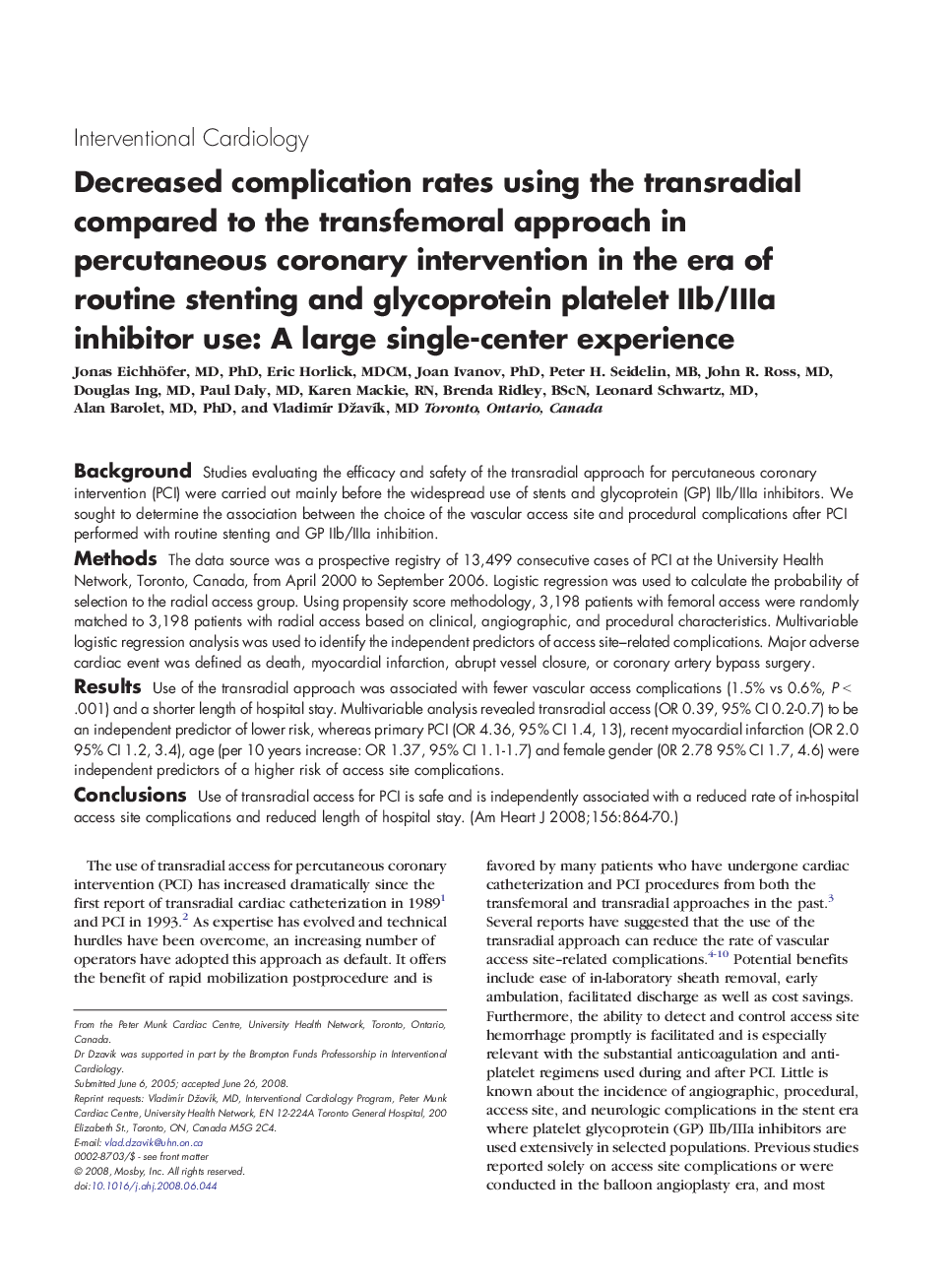| کد مقاله | کد نشریه | سال انتشار | مقاله انگلیسی | نسخه تمام متن |
|---|---|---|---|---|
| 2850692 | 1167804 | 2008 | 7 صفحه PDF | دانلود رایگان |

BackgroundStudies evaluating the efficacy and safety of the transradial approach for percutaneous coronary intervention (PCI) were carried out mainly before the widespread use of stents and glycoprotein (GP) IIb/IIIa inhibitors. We sought to determine the association between the choice of the vascular access site and procedural complications after PCI performed with routine stenting and GP IIb/IIIa inhibition.MethodsThe data source was a prospective registry of 13,499 consecutive cases of PCI at the University Health Network, Toronto, Canada, from April 2000 to September 2006. Logistic regression was used to calculate the probability of selection to the radial access group. Using propensity score methodology, 3,198 patients with femoral access were randomly matched to 3,198 patients with radial access based on clinical, angiographic, and procedural characteristics. Multivariable logistic regression analysis was used to identify the independent predictors of access site–related complications. Major adverse cardiac event was defined as death, myocardial infarction, abrupt vessel closure, or coronary artery bypass surgery.ResultsUse of the transradial approach was associated with fewer vascular access complications (1.5% vs 0.6%, P < .001) and a shorter length of hospital stay. Multivariable analysis revealed transradial access (OR 0.39, 95% CI 0.2-0.7) to be an independent predictor of lower risk, whereas primary PCI (OR 4.36, 95% CI 1.4, 13), recent myocardial infarction (OR 2.0 95% CI 1.2, 3.4), age (per 10 years increase: OR 1.37, 95% CI 1.1-1.7) and female gender (0R 2.78 95% CI 1.7, 4.6) were independent predictors of a higher risk of access site complications.ConclusionsUse of transradial access for PCI is safe and is independently associated with a reduced rate of in-hospital access site complications and reduced length of hospital stay.
Journal: American Heart Journal - Volume 156, Issue 5, November 2008, Pages 864–870